8. Nikhil Dass: Lit
I completed this board late last year. I’m pretty old school in my approach to playing guitar (Read: I like da blooz.), so before I embarked on this project, I thought four or five would do it for me. Yeah, right! Anyway, many of these are still pretty old-school options, but I’ve got everything I need to cover my bases. I play hard rock, blues, and worship music, and this board has something for all of that. Also, every pedal on this Temple Audio DUO 24 board was bought used. Do you like my lights? I used a Temple Audio RGB LED strip.My signal chain is a Gibson or Epiphone Les Paul, to my effects in front of the amp, to my Marshall DSL100H or 2555X, to my effects loop, back to the aforementioned Marshall. Here’s what’s in front of my amp:
• Korg Pitchblack mini: I’m one of those guys who’s never been able to fully appreciate polyphonic tuners.
• TC Electronic Sub ‘N’ Up Mini Octave: Currently loaded with a TC TonePrint that has an organ-like modulation on it, except I’ve tweaked it so the octave-up control affects not just the level of the octave up, but also the mix of the modulation—i.e., fully counterclockwise is no modulation, fully clockwise is throbbing modulation.
• Dunlop MC404 CAE Wah: Tweaked so the yellow fasel inductor has a little less Q than stock, and the red fasel has a little more.
• Fulltone Supa-Trem ST-1: Set up as an always-on clean boost, and when I want a subtle tremolo I can hit the hard/soft switch.
• MXR Hendrix Gypsy Fuzz: I wanted a Fuzz Face that had a tone control, so I went with this one.
• Wampler Tumnus: Many players use this as a (sorta) clean boost, but I’ve got this dialed in for more gain when the situation requires it. This also helps smooth out the fuzz and give it more mids, so the fuzz doesn’t get lost in the mix.
• MXR Phase 95: Currently in script Phase 90 mode. It can create some neat textures when paired with the fuzz or stacked with the tremolo.
Effects loop:
• MXR Ten Band EQ: Helps to tame the fizziness of the DSL.
• TC Electronic Spark Mini Booster: I ride the volume knobs on my guitars to get clean tones, so I usually kick this on so I don’t completely disappear from the mix when I roll the guitar volume back.
• MXR Smart Gate: In the absolute last place in the chain it can go to provide maximum noise-gating effect.
• Boss DD-20 Giga Delay: A couple of my favorite players use this, so I do, too.
• TC Electronic Hall of Fame Mini Reverb: Loaded with TC’s basic plate reverb TonePrint, this is mainly used with my Marshall 2555X, as that doesn’t have onboard reverb.
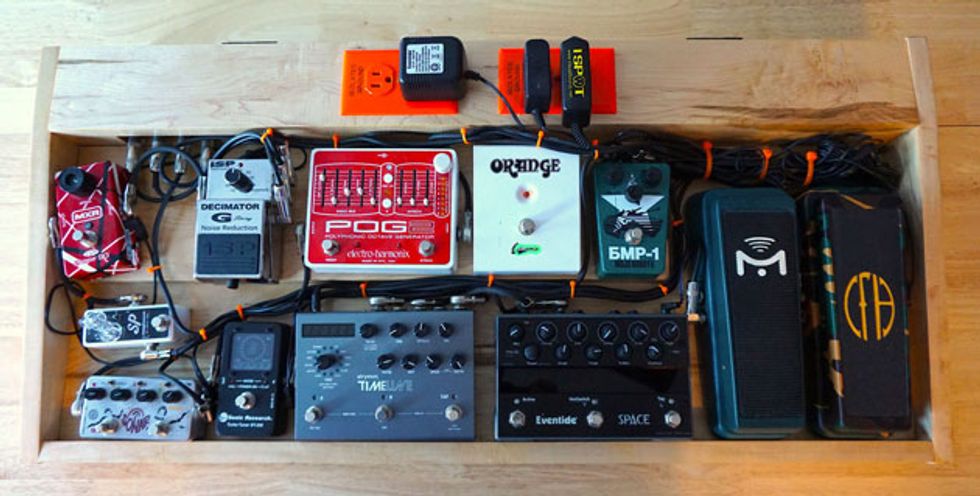
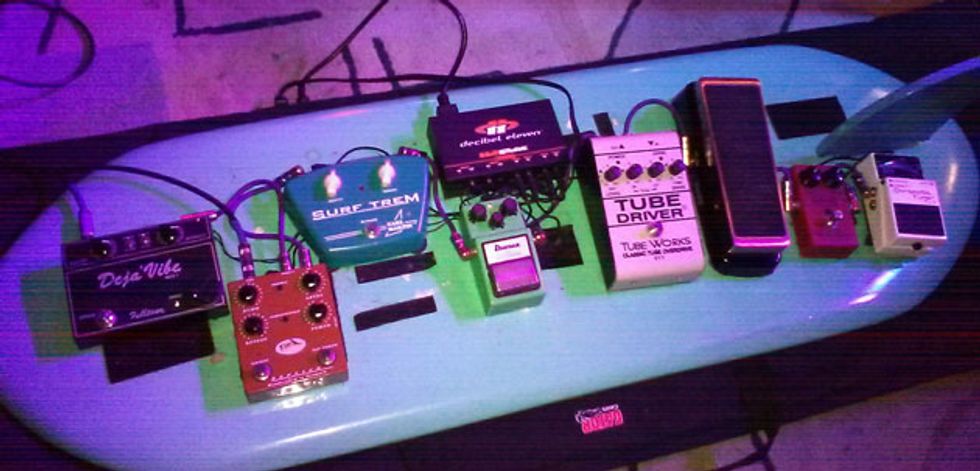
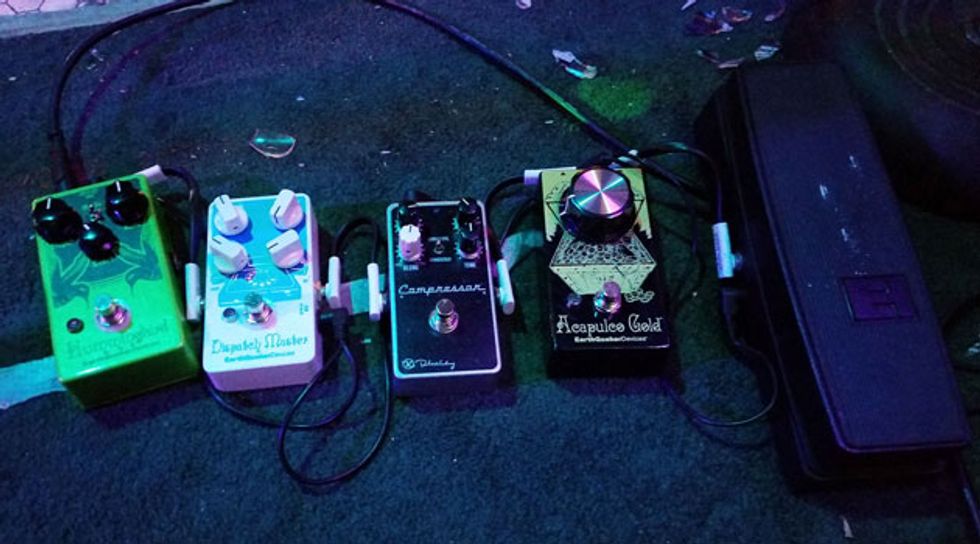
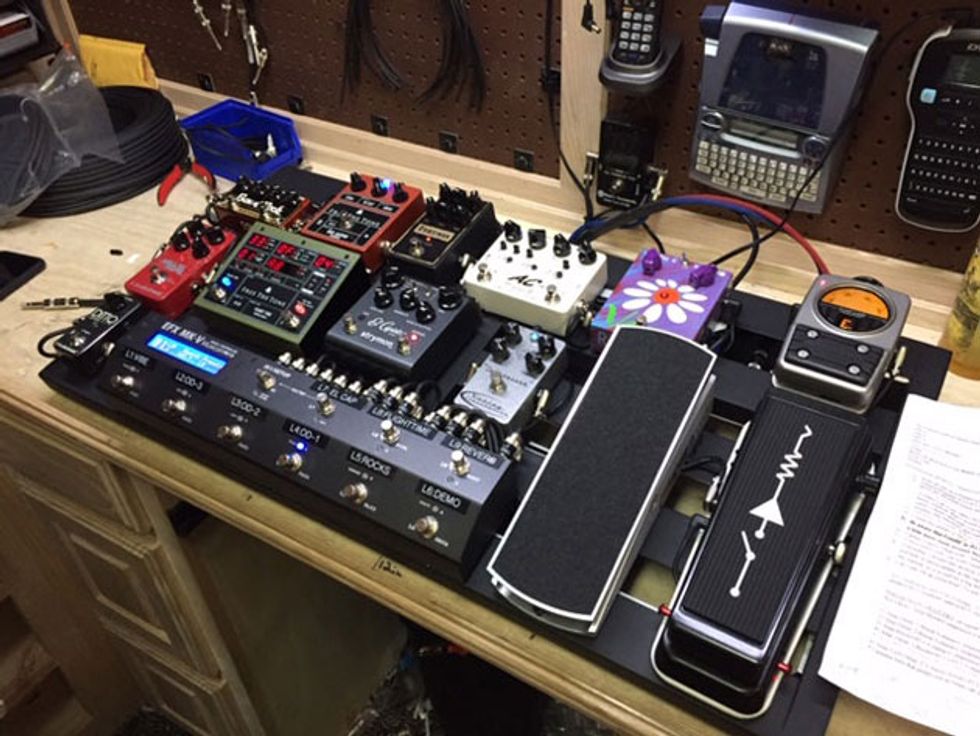
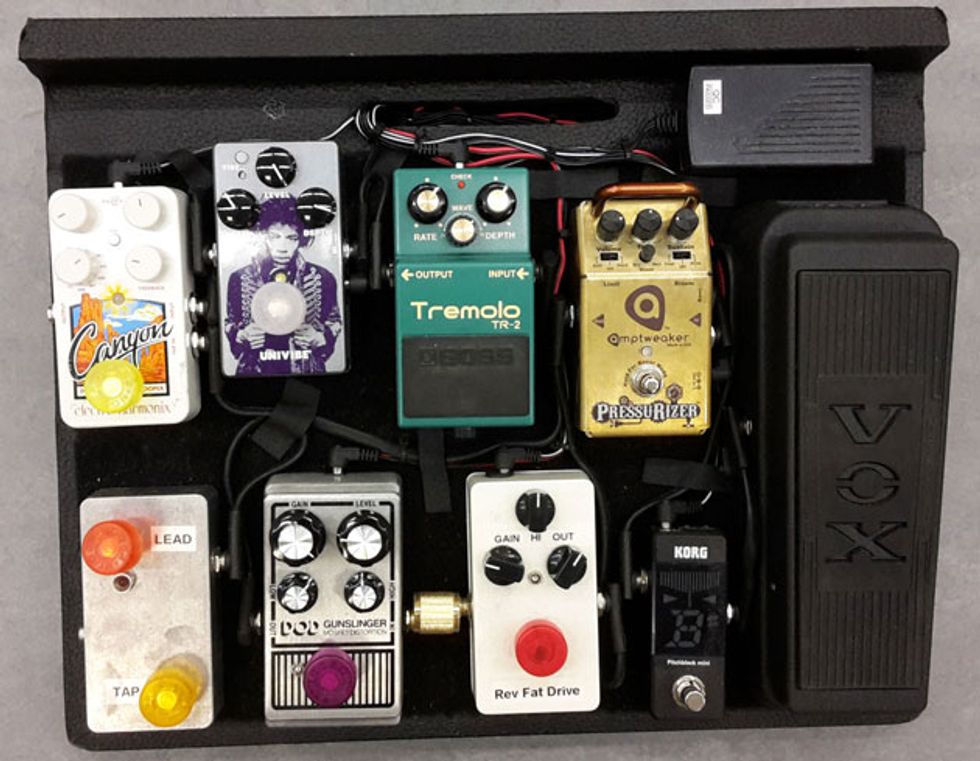
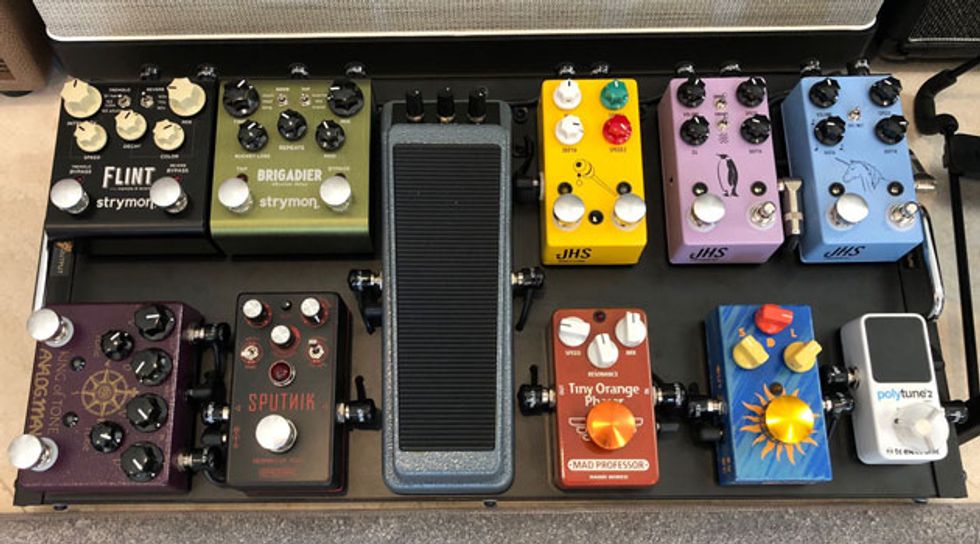
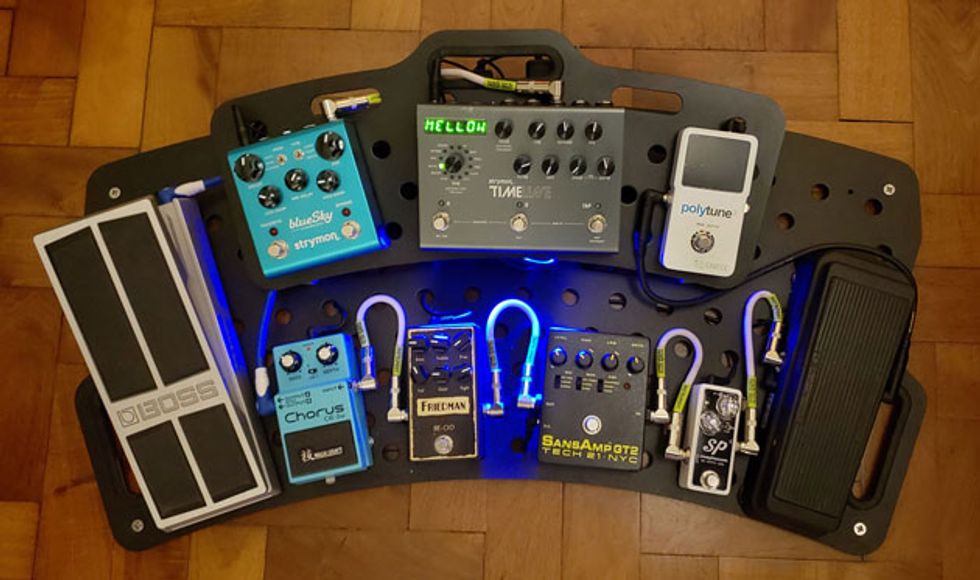
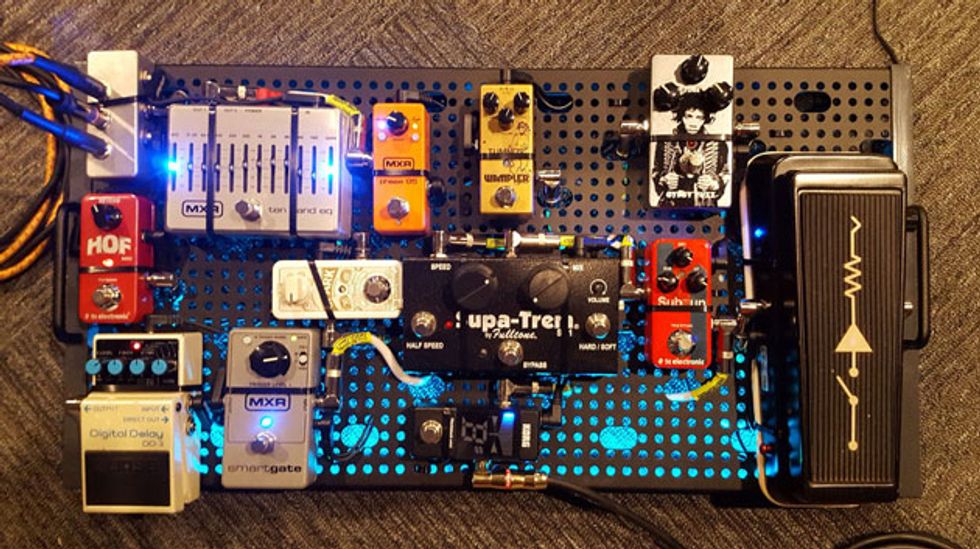
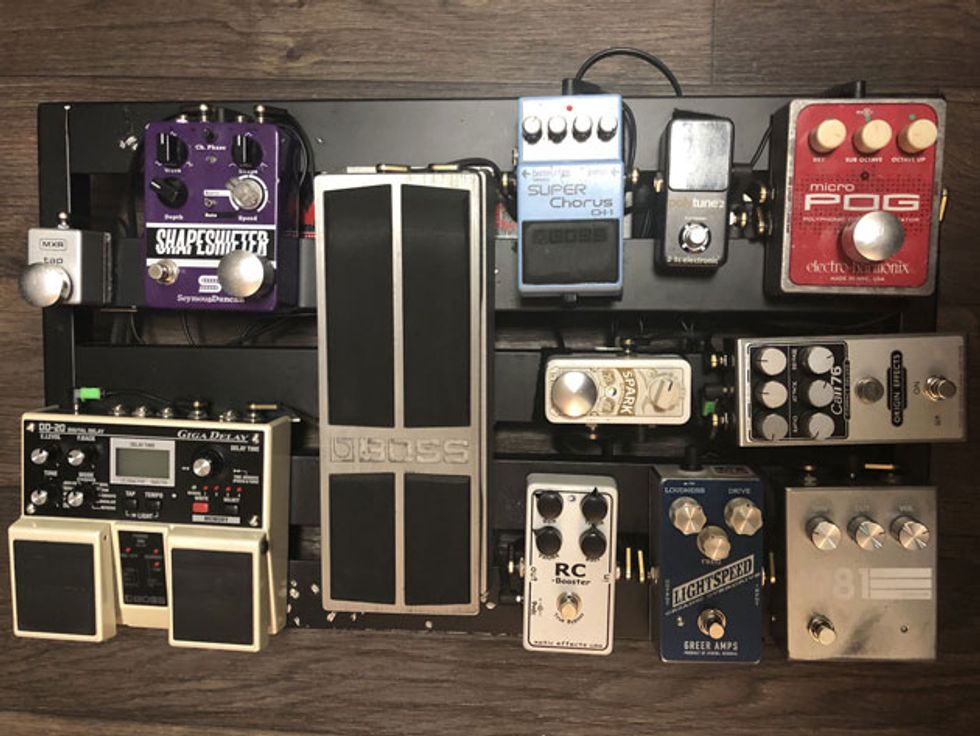
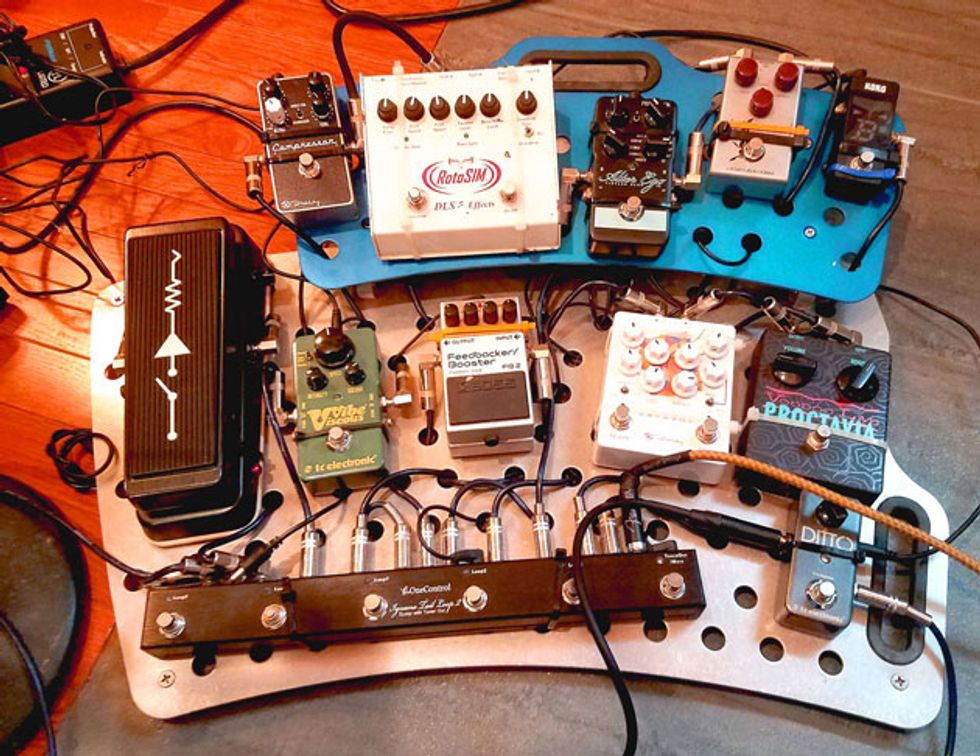
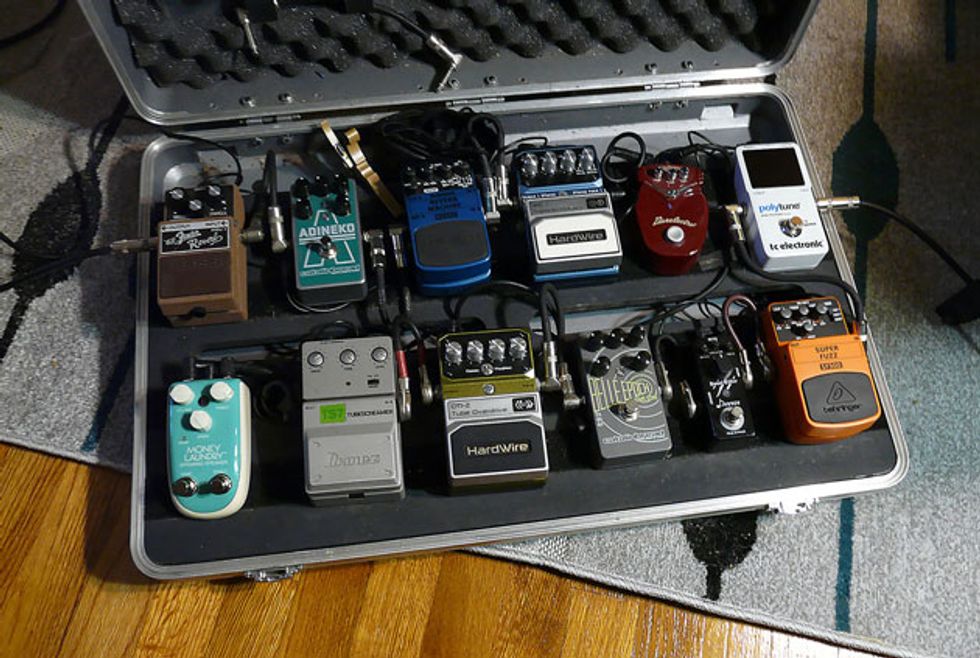
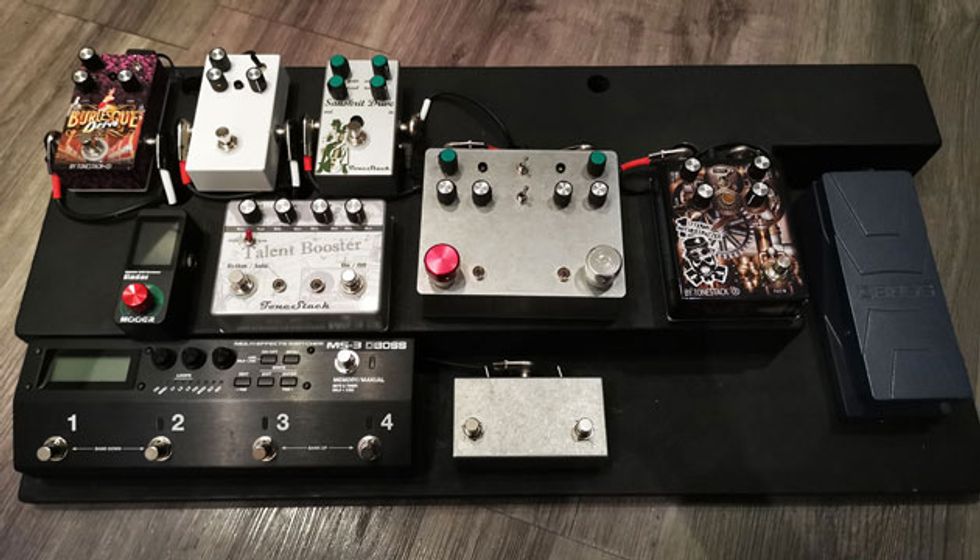
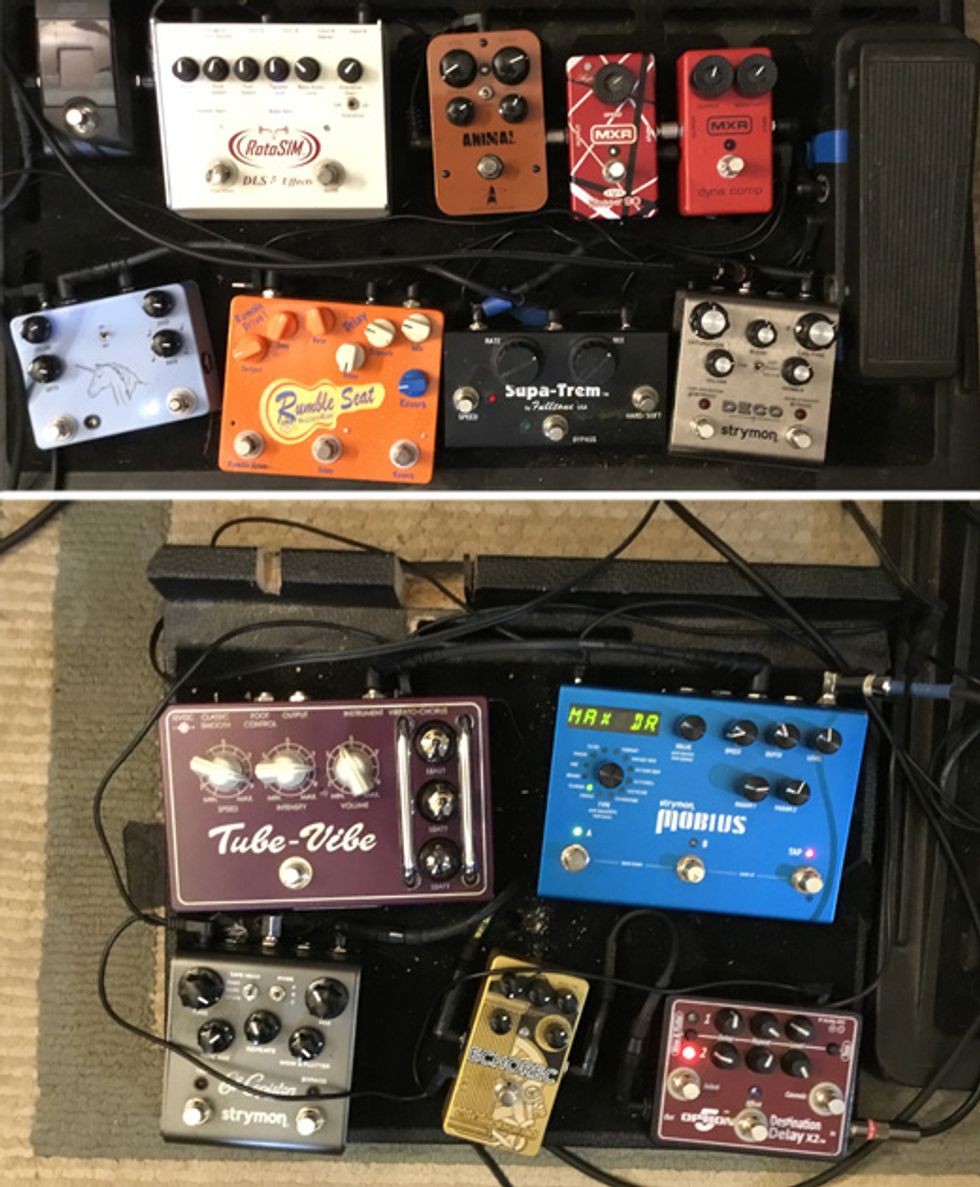
It’s that time of year, when Premier Guitar readers wow us with the intricate details of their pedalboards. A few highlights for 2019 include a surf board station, a bright board with LED lighting, a Nashville guitarist who gigs on Lower Broadway, and a pedal setup with no frills … and literally no board at all. (All this player needs is beer and broken glass.) As an added bonus, a pro pedal builder shares his demo board and tells us why and how he started building pedals from scratch. Read on, play on, stomp on!














